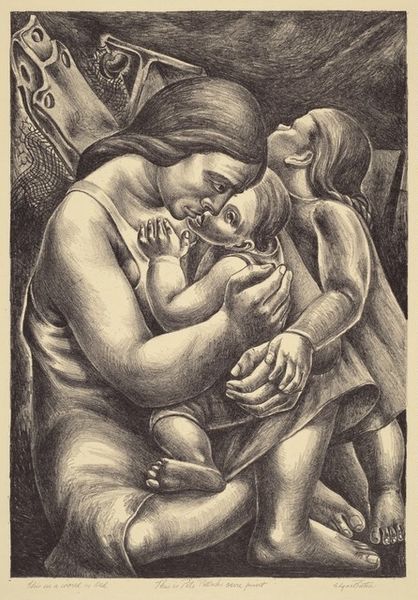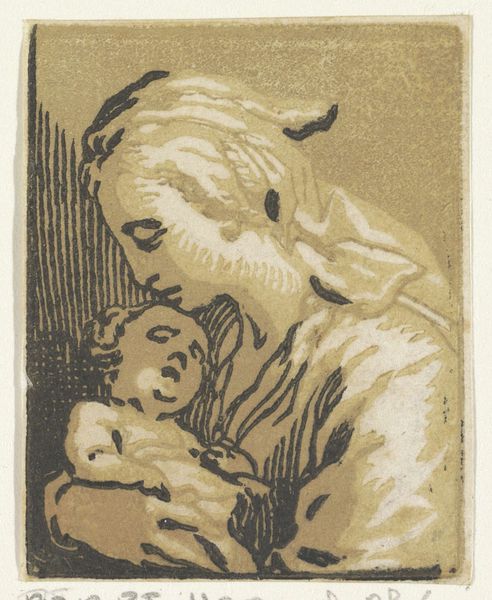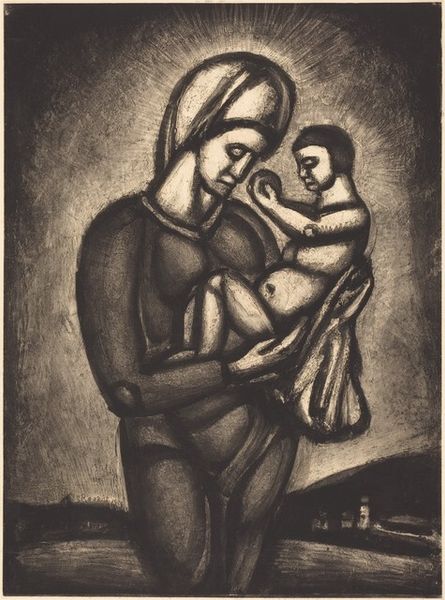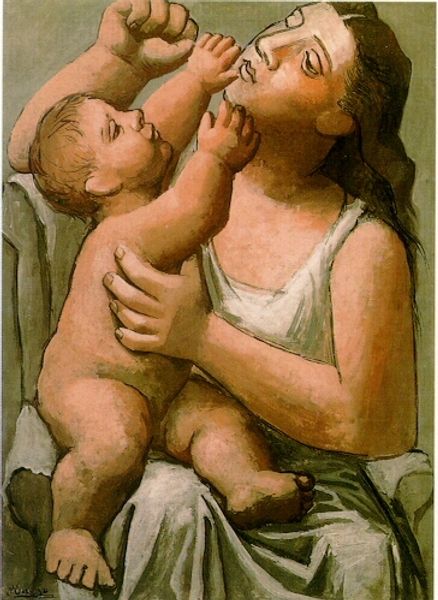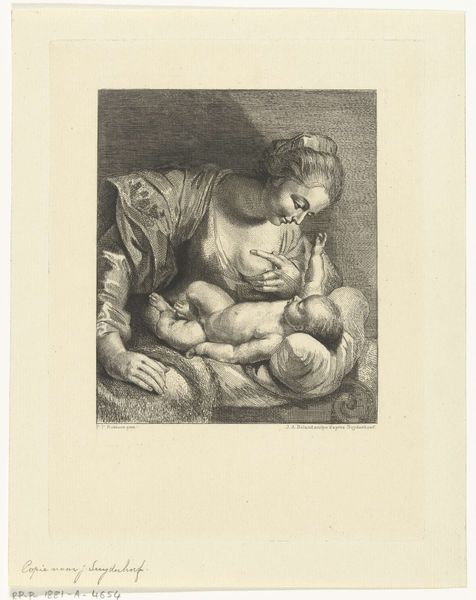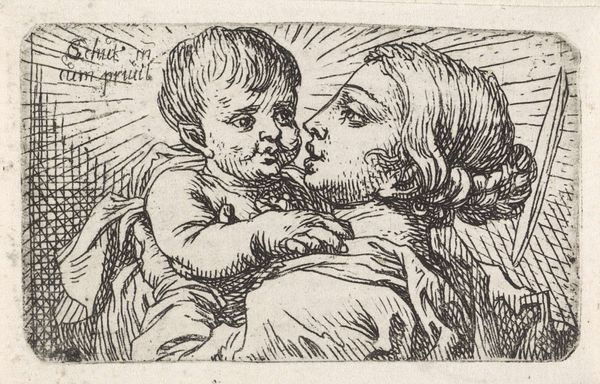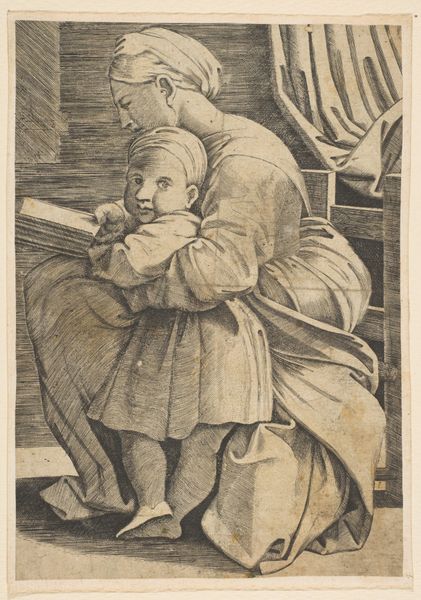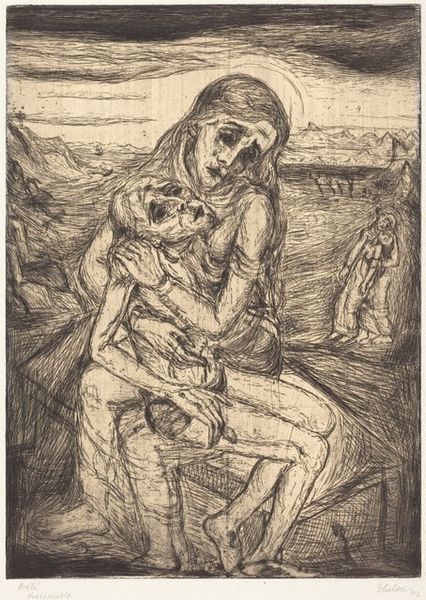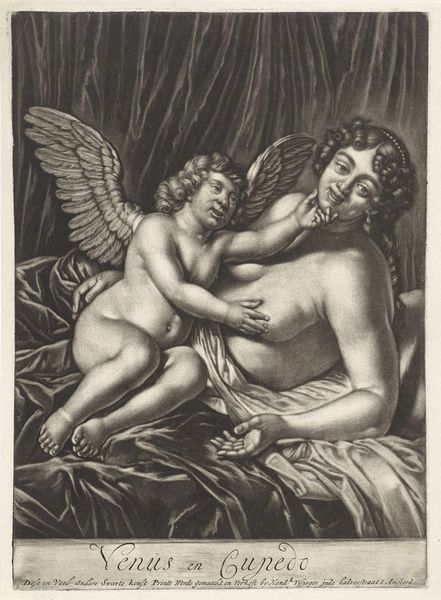
Dimensions: image: 27.46 × 22.07 cm (10 13/16 × 8 11/16 in.) sheet: 40.48 × 29.53 cm (15 15/16 × 11 5/8 in.)
Copyright: National Gallery of Art: CC0 1.0
Editor: So, here we have Allen Lewis's "Mother Oak and Baby Acorn" from around 1922, a woodcut print. There’s something both tender and unsettling about it. What strikes you about this piece? Curator: What immediately grabs me is the potent symbolism interwoven with the historical context of the early 20th century. Look at the choice of the oak, often representing strength, resilience, and longevity. In a post-war era marked by uncertainty and loss, how might this image function as a visual metaphor for hope and regeneration? Consider also how traditional representations of motherhood are being challenged, or perhaps subtly reinforced, here. Editor: That's interesting, I hadn't considered the post-war context. Is the 'Mother Oak' figure also meant to embody a connection to nature, perhaps even a specific class identity rooted in a rural or agrarian lifestyle, at a time of increasing industrialization? Curator: Exactly. The ‘Mother Oak’ evokes a connection to the land, but also speaks to ideas about the Earth as a symbol of 'mother'. The figure appears timeless. Do you notice how her features, while gentle, also possess a certain stoicism? It invites us to question not only the idealized image of motherhood but also the strength and quiet resilience often expected of women, particularly in that period. Editor: So, beyond the immediate aesthetic appeal, you're suggesting we can read it as a commentary on the social expectations and cultural anxieties surrounding motherhood, nature, and the changing world at the time. Curator: Precisely! Art provides that lens. I think by delving into these layers, we gain a much richer understanding. Editor: That's incredibly helpful; thank you. It definitely gives me a lot to think about. Curator: And hopefully inspires us to question more, to see how artworks engage in cultural dialogues about identity, environment, and society.
Comments
No comments
Be the first to comment and join the conversation on the ultimate creative platform.


